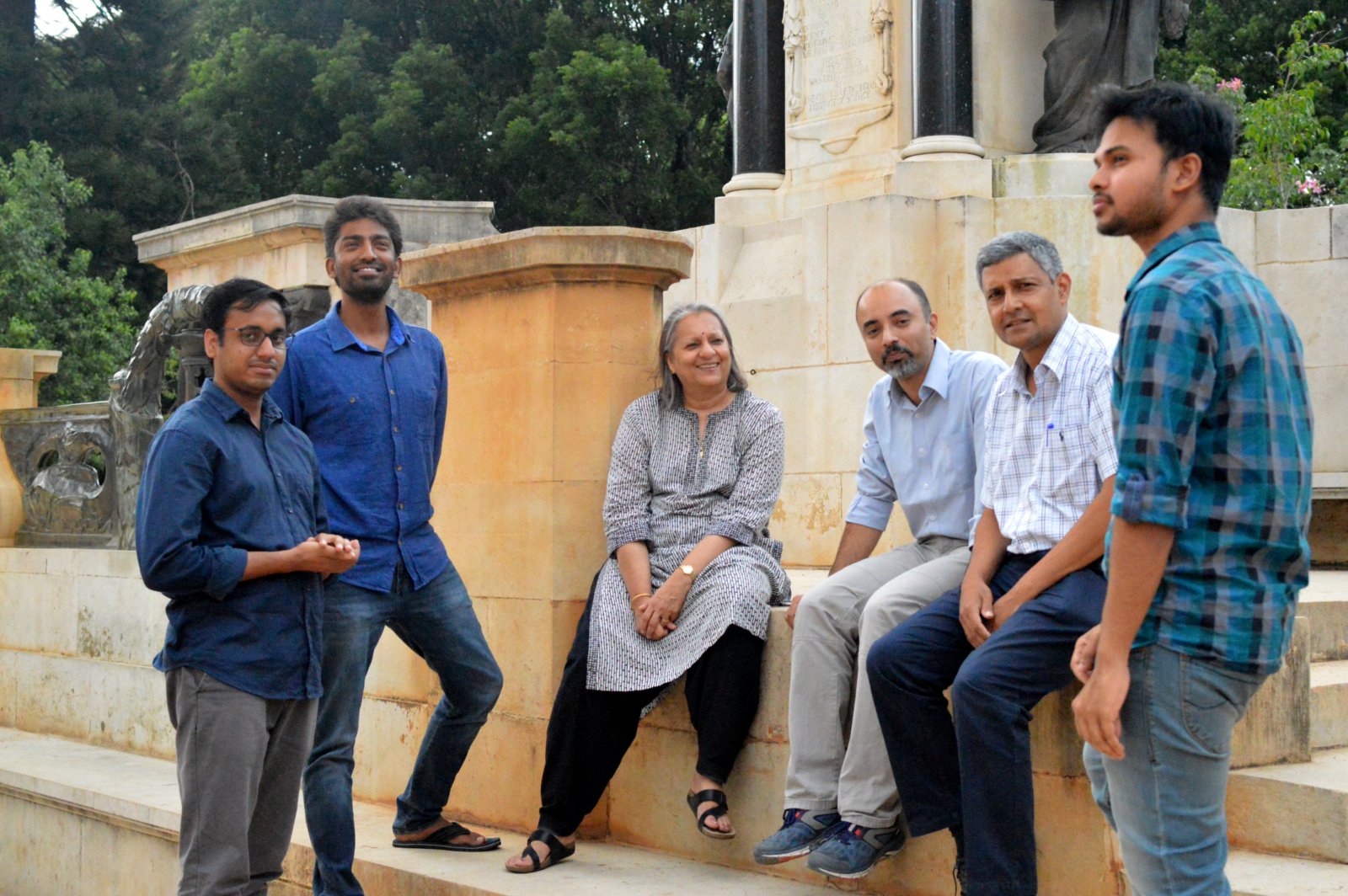Molecular hole punchers from bacteria that kill your cells
Certain bacteria produce a class of toxins that poke nanometer-sized holes into animal and human cells. This often results in cells dying. “They kill our cells but not the bacteria that make them. We wanted to understand how.”, tells Rahul Roy, the corresponding author of the study to be published in the Proceedings of the National Academy of Sciences (USA). The team of researchers from the Indian Institute of Science (IISc), Bangalore showed how the presence of cholesterol, in the membrane of animal cells facilitates these pore-forming toxins to cause rapid cell damage.
There are a number of steps that occur before a protein forms a pore on a cell membrane. These include binding of the toxin as individual molecules to the membrane, finding other toxin molecules by moving around on the membrane, after which they can start forming ring-like structures by interacting with each other, and finally puncturing a hole in the membrane. An interdisciplinary team from the Centre of Biosystems Science and Engineering, Department of Chemical Engineering and the Department of Molecular Reproduction, Development and Genetics at IISc came together to address this outstanding problem for a pore-forming toxin called Cytolysin A (ClyA) released by the bacteria E. Coli.
Cytolysin A forms a ring-like pore composed of twelve individual protein molecules. The scientists wanted to identify the constituents in the cell membrane that could influence the toxin’s ability to rupture the membrane. By measuring the extent of rupture of RBCs, they found that cholesterol in the membrane of the target cell was critical for ClyA to function. In the absence of cholesterol the proteins ability to puncture holes in the cell were greatly compromised. To provide exquisite molecular detail on this whole process, the investigators used a microscope that can visualise single molecules of the toxin protein as they move on the membrane and assemble into pores. These single molecule experiments showed for the first time that cholesterol present in the membrane helped in stabilising the structure of the protein that was necessary for formation of pores. Using extensive computer simulations where individual molecules are tracked, at the supercomputing facility at IISc, they were able to simulate movement of regions of the protein that interacted with the memJbrane and cholesterol, with atomic detail. Cholesterol in fact assisted in formation of the ring-like pore structures by acting like a ‘molecular glue’ between the neighbouring toxin molecules. “Accessing these hidden molecular insights was feasible due to the world class computing facility at IISc, which allows us to study complex biological molecules interacting with each other” says Professor Ayappa, Chair of the Chemical Engineering Department and a co-author on the paper.
“This study clearly required the expertise of biologists, chemical engineers, biophysicists and bioengineers. This coming together of researchers allowed an understanding of the details of the working of the toxin, that would have been difficult to decipher by the individual disciplines and highlights how important discoveries can be made by such interdisciplinary approaches” says Sandhya S. Visweswariah from the Centre for Biosystems Science and Engineering and the Department of Molecular Reproduction, Development and Genetics.
Apart from enhancing our ability to tackle pore-forming toxins and better employing them in applications that range from DNA sequencing to cancer therapy, the study has implications beyond the field of bacterial proteins. “Due to the similarity of these toxins to proteins that cause neurodegenerative disorders such as Alzheimer’s and Parkinson’s, the findings from the study can potentially be extrapolated to understand mechanisms associated with these diseases as well”, adds the first author of the paper, Pradeep Sathyanarayana from the Center of Biosystems Science and Engineering.

From left to right – Satyaghosh Maurya (Chemical Engineering), Pradeep Sathyanarayana (BioSystems Science and Engineering), Prof. Sandhya Visweswariah (Molecular Reproduction, Development, and Genetics), Dr. Rahul Roy (Chemical Engineering), Prof. K. Ganapathy Ayappa (Chemical Engineering) and Amit Behera (Chemical Engineering)
References:
P. Sathyanarayana, R. Desikan, G. Ayappa and S. S. Visweswariah, “The Solvent-Exposed C-Terminus of the Cytolysin A Pore-Forming Toxin Directs Pore Formation and Channel Function in Membranes”, Biochemistry DOI: 10.1021/acs.biochem.6b00593
S Banerjee, S Maurya and R Roy, “Single-molecule fluorescence imaging: generating insights into molecular interactions in virology” J Biosciences, DOI: 10.1007/s12038-018-9769-y
P Sathyanarayana, S Maurya, ABehera, M Ravichandran, SS Visweswariah, KG Ayappa, and R Roy, “Cholesterol promotes Cytolysin A activity by stabilizing the intermediates during pore formation” PNAS (USA), https://doi.org/10.1073/pnas.1721228115
Website URL: https://nanobiology.nanobiophotonics.org




